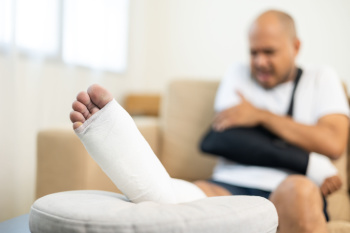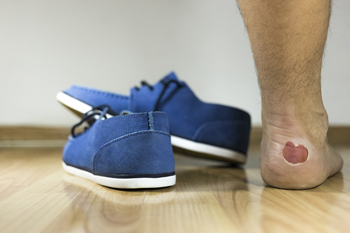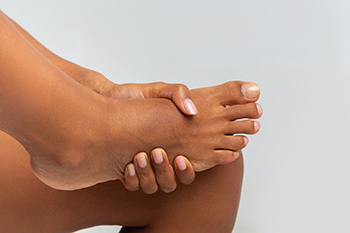Items filtered by date: February 2024
Are Separate Shoes Needed for Running and Walking?

The question of whether separate shoes are necessary for running and walking often stirs debate among fitness enthusiasts and casual walkers alike. While some argue that specialized footwear for each activity optimizes performance and prevents injuries, others believe that a single pair of comfortable shoes suffice for both. The key consideration lies in the biomechanics and impact forces involved in running versus walking. Running entails higher impact forces and repetitive motion compared to walking, placing greater strain on the feet, ankles, and joints. Running shoes typically feature additional cushioning, support, and stability to absorb shock and promote forward propulsion. Conversely, walking shoes prioritize flexibility and comfort for the rolling motion of the foot. However, many modern athletic shoes offer versatile designs that cater to both activities effectively. Ultimately, individual preferences, foot mechanics, and activity levels should guide the decision to invest in separate shoes. Regardless of the choice, ensuring proper fit, support, and durability remains essential for promoting foot health and preventing injuries during physical activities. If you have questions about what type of shoes to wear for your walking or running desires, it is suggested that you confer with a podiatrist, who can address any concerns you may have.
For more information about walking shoes versus running shoes, consult with one of our podiatrists from Princeton Foot & Ankle Associates. Our doctors can measure your feet to determine what your needs are and help you find an appropriate pair of footwear.
Foot Health: The Differences between Walking & Running Shoes
There are great ways to stay in shape: running and walking are two great exercises to a healthy lifestyle. It is important to know that running shoes and walking shoes are not interchangeable. There is a key difference on how the feet hit the ground when someone is running or walking. This is why one should be aware that a shoe is designed differently for each activity.
You may be asking yourself what the real differences are between walking and running shoes and the answers may shock you.
Differences
Walking doesn’t involve as much stress or impact on the feet as running does. However, this doesn’t mean that you should be any less prepared. When you’re walking, you land on your heels and have your foot roll forward. This rolling motion requires additional support to the feet.
Flexibility – Walking shoes are designed to have soft, flexible soles. This allows the walker to push off easily with each step.
If you have any questions, please feel free to contact our offices located in Princeton, and West Windsor, NJ . We offer the newest diagnostic and treatment technologies for all your foot care needs.
Pain and Foot Fractures

Treatment for a broken foot typically involves rest, elevation, and taking anti-inflammatory medications to manage pain and swelling. Healing times differ depending on the severity of the break. Symptoms also vary, including pain, difficulty moving the foot, and tenderness. Differentiating between a broken foot and a sprain can be challenging, but fractures generally result in more intense and continuous pain. Treatment options include immobilization with a cast, surgical intervention for severe cases, and rehabilitation exercises. Prevention measures include wearing appropriate footwear and maintaining bone health with a balanced diet and regular exercise. If you have sustained a foot fracture, it is suggested that you schedule an appointment with a podiatrist as quickly as possible. Prompt medical attention and adherence to treatment guidelines are essential for successful healing.
A broken foot requires immediate medical attention and treatment. If you need your feet checked, contact one of our podiatrists from Princeton Foot & Ankle Associates. Our doctors can provide the care you need to keep you pain-free and on your feet.
Broken Foot Causes, Symptoms, and Treatment
A broken foot is caused by one of the bones in the foot typically breaking when bended, crushed, or stretched beyond its natural capabilities. Usually the location of the fracture indicates how the break occurred, whether it was through an object, fall, or any other type of injury.
Common Symptoms of Broken Feet:
- Bruising
- Pain
- Redness
- Swelling
- Blue in color
- Numbness
- Cold
- Misshapen
- Cuts
- Deformities
Those that suspect they have a broken foot shoot seek urgent medical attention where a medical professional could diagnose the severity.
Treatment for broken bones varies depending on the cause, severity and location. Some will require the use of splints, casts or crutches while others could even involve surgery to repair the broken bones. Personal care includes the use of ice and keeping the foot stabilized and elevated.
If you have any questions please feel free to contact our offices located in Princeton, and West Windsor, NJ . We offer the newest diagnostic and treatment technologies for all your foot and ankle needs.
Causes of Foot Blisters in Low Friction Scenarios and Soft Tissue Distortions

Foot blisters, those fluid-filled sacs that form on the skin, often arise from a combination of factors, shedding light on the intricate nature of their formation. In scenarios of low friction, prolonged moisture exposure, and ill-fitting footwear, the outer layer of the skin becomes susceptible to damage. Excessive moisture softens the skin, making it more prone to friction and subsequent blistering. Additionally, wearing tight or poorly cushioned shoes can create constant rubbing against the skin, aggravating the vulnerability. Soft tissue distortions, such as bunions or hammertoes, contribute to increased pressure on specific areas of the foot, intensifying the likelihood of blister formation. Understanding the interplay of these factors underscores the importance of proper footwear, moisture management, and addressing foot deformities to prevent blistering. By acknowledging the various causes of foot blisters, patients can take proactive measures to safeguard their feet and maintain optimal skin health. If you have developed blisters on your feet that have become infected, it is suggested that you confer with a podiatrist who can treat this condition, and offer effective blister prevention techniques.
Blisters are prone to making everyday activities extremely uncomfortable. If your feet are hurting, contact one of our podiatrists of Princeton Foot & Ankle Associates. Our doctors can provide the care you need to keep you pain-free and on your feet.
Foot Blisters
Foot blisters develop as a result of constantly wearing tight or ill-fitting footwear. This happens due to the constant rubbing from the shoe, which can often lead to pain.
What Are Foot Blisters?
A foot blister is a small fluid-filled pocket that forms on the upper-most layer of the skin. Blisters are filled with clear fluid and can lead to blood drainage or pus if the area becomes infected.
How Do Blisters Form?
Blisters on the feet are often the result of constant friction of skin and material, usually by shoe rubbing. Walking in sandals, boots, or shoes that don’t fit properly for long periods of time can result in a blister. Having consistent foot moisture and humidity can easily lead to blister formation.
Prevention & Treatment
It is important to properly care for the affected area in order to prevent infection and ease the pain. Do not lance the blister and use a Band-Aid to provide pain relief. Also, be sure to keep your feet dry and wear proper fitting shoes. If you see blood or pus in a blister, seek assistance from a podiatrist.
If you have any questions, please feel free to contact our offices located in Princeton, and West Windsor, NJ . We offer the newest diagnostic and treatment technologies for all your foot care needs.
It's Time for Beautiful Feet
A Closer Look at How CRPS Can Affect the Feet
 Complex regional pain syndrome, or CRPS, a perplexing and debilitating condition, manifests as chronic pain, swelling, and changes in skin color and temperature, often affecting the extremities. When CRPS strikes the feet, it introduces a unique set of challenges for individuals grappling with this complex disorder. The condition arises typically after an injury or trauma, triggering an abnormal response in the nervous system. In the feet, CRPS can lead to severe, constant pain, sensitivity to touch, and difficulty bearing weight. The affected foot may change skin texture, temperature, and color, presenting a mosaic of symptoms that defy conventional explanations. Understanding how CRPS impacts the feet is essential for accurate diagnosis and tailored treatment plans. If you have foot pain that encompasses the above symptoms, it is strongly suggested that you seek the counsel of a podiatrist who can accurately diagnose and treat CRPS.
Complex regional pain syndrome, or CRPS, a perplexing and debilitating condition, manifests as chronic pain, swelling, and changes in skin color and temperature, often affecting the extremities. When CRPS strikes the feet, it introduces a unique set of challenges for individuals grappling with this complex disorder. The condition arises typically after an injury or trauma, triggering an abnormal response in the nervous system. In the feet, CRPS can lead to severe, constant pain, sensitivity to touch, and difficulty bearing weight. The affected foot may change skin texture, temperature, and color, presenting a mosaic of symptoms that defy conventional explanations. Understanding how CRPS impacts the feet is essential for accurate diagnosis and tailored treatment plans. If you have foot pain that encompasses the above symptoms, it is strongly suggested that you seek the counsel of a podiatrist who can accurately diagnose and treat CRPS.
Foot Pain
Foot pain can be extremely painful and debilitating. If you have a foot pain, consult with one of our podiatrists from Princeton Foot & Ankle Associates. Our doctors will assess your condition and provide you with quality foot and ankle treatment.
Causes
Foot pain is a very broad condition that could be caused by one or more ailments. The most common include:
- Bunions
- Hammertoes
- Plantar Fasciitis
- Bone Spurs
- Corns
- Tarsal Tunnel Syndrome
- Ingrown Toenails
- Arthritis (such as Gout, Rheumatoid, and Osteoarthritis)
- Flat Feet
- Injury (from stress fractures, broken toe, foot, ankle, Achilles tendon ruptures, and sprains)
- And more
Diagnosis
To figure out the cause of foot pain, podiatrists utilize several different methods. This can range from simple visual inspections and sensation tests to X-rays and MRI scans. Prior medical history, family medical history, and any recent physical traumatic events will all be taken into consideration for a proper diagnosis.
Treatment
Treatment depends upon the cause of the foot pain. Whether it is resting, staying off the foot, or having surgery; podiatrists have a number of treatment options available for foot pain.
If you have any questions, please feel free to contact our offices located in Princeton, and West Windsor, NJ . We offer the newest diagnostic and treatment technologies for all your foot care needs.

